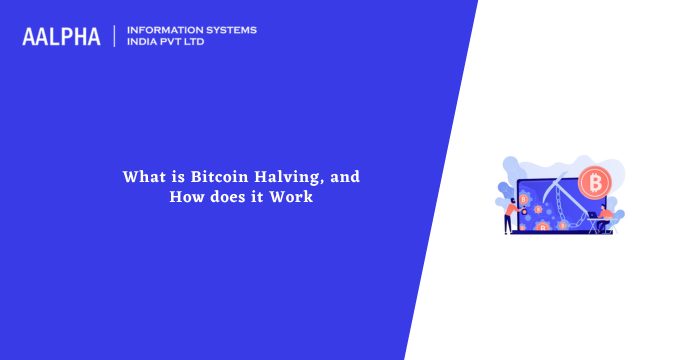The Bitcoin network has existed for several years after introduction by Satoshi Nakamoto. It is a form of decentralized cryptocurrency, a digital asset created and managed using cryptography. Its inception was to counter the effects of the 2008 financial crisis. Its history has been volatile and amazing, attracting many investors and tapping more into modern technologies.
Bitcoin has been a successful crypto based on its unique ingenuine design. It gained ground following combined forces of economic incentives, innovative consensus protocol, hard-coded monetary policy, and enhanced cryptography. It was estimated that only 21 million Bitcoins would exist. So far, only 19 million Bitcoins have been mined, leaving a space for less than 2 million to be mined. This implies that Bitcoin has a limited supply and follows a strict issuance mechanism. Long-term price development follows a feature known as bitcoin halving to ensure that disinflationary pressure or control of the Bitcoin supply exists.
What is Bitcoin halving?
Bitcoin halving occurs within the Bitcoin network in which the reward for mining new blocks is cut in half at regular intervals. It occurs every four years and will continue until 2140, when the maximum Bitcoin supply is attained. Once the maximum supply is reached, miners will get rewards via transaction fees that users will pay as an incentive to confirm transactions.
Whenever a bitcoin halving takes place, miners’ reward earned whenever validating or verifying transactions reduces by 50%, a technique that discourages new entrants into the Bitcoin market. At the inception of Bitcoin, miners enjoyed 50 BTC for every block. A period of 4 years saw the mining of over 10.5 million BTC. After 3 successive halvings (the third happened on May 11, 2020), the reward was 6.25 BTC.
Halving is a key concept in Bitcoin tokenomics (the principles and procedures that monitor cryptocurrency’s behavior and value). It ensures a steady Bitcoin flow within the market and maintains the supply never exceeding 21 million. By ensuring scarcity is maintained, halving helps counteract inflation. The inflation rate for Bitcoin is below 2%, which is bound to reduce when halving happens. Scarcity in supply and increased demand positively impact the Bitcoin price, a great way to attract more investors. So far, 19.65 million BTC (93.56%) have been mined and are in circulation, meaning we only have 1.35 million BTC left for mining for the next 116 years.
How Bitcoin Halving Works
Bitcoin runs on a decentralized network of validators who carry out mining, the process of verifying Bitcoin transactions. The validators or miners get 6.25 BTC on their first use of complex math to add transactions to the network, which indicates their proof-of-work (PoW). Bitcoin halving is strongly embedded within the software and, therefore, occurs automatically without any need for central authority or third parties. The transactions are grouped into blocks, and the miners are rewarded after they validate transactions within a given block. The network is so conditioned that halving automatically occurs after mining 210,000 blocks, and miners’ reward is reduced by half.
The current Bitcoin price of 6.25 BTC, valued at $410,199.38, is a good incentive to attract miners into adding more transaction blocks. It is estimated that the addition of transaction blocks happens every 10 minutes, and the Bitcoin code is automated so that the miners’ reward is reduced by half (50%) after creating 210,000 blocks. This occurrence happens in intervals of 4 years, which always leads to increased Bitcoin prices. The first halving happened in 2012 after mining 210,000 blocks, reducing the reward from 50 BTC to 25 BTC. The second happened in 2016 after mining the 420,000th block, and the reward was 12.5 BTC. The third happened in May 2020, decreasing the reward to 6.25 BTC. Halving will continue happening until 2140. Once this happens, the reward will now be charged to transaction fees only.
Understanding Bitcoin Network and Mining
Bitcoin operates on the underlying technology known as blockchain, a group of computers (commonly called nodes) running the Bitcoin software and has the transaction history (whether partial or complete) that happens within that network. A full node possesses the complete history of the Bitcoin transactions and helps to approve or reject a given transaction within the network. Automated checking by the node validates the validity of a transaction. A valid transaction must contain the appropriate validation parameters, within the stipulated length.
Validation happens for every transaction separately. It happens once all transactions within a given block are validated. The transaction is added to an existing blockchain upon successful approval and then shared with other nodes. Increasing the number of nodes within the network boosts the blockchain’s stability and security. So far, an estimated 18,830 computers are currently running the Bitcoin code. The network welcomes anyone to become a node once they have the core prerequisites with sustainable storage to download the whole blockchain plus transaction history. Not everyone joining the network is a miner.
We have already seen that Bitcoin works within a decentralized space without central authority for verifying transactions. This is a good way of maintaining user honesty. Validation of transactions happens through the process we call crypto mining. We can explain Bitcoin mining in simple terms as the procedure of using computers to become a participant within Bitcoin’s blockchain network to serve as transaction validators and processors. As a miner, you always earn a reward alongside transaction fees.
Proof-of-work (PoW) is a consensus mechanism for validating node transactions. The nodes solve complex mathematical problems and get rewards for new blocks. This process of solving complex calculations is energy-intensive and time-consuming. Once miners confirm and verify a given transaction, it is pushed to a block, becoming part of the blockchain network. Once that happens, it is impossible to remove it from the network. The miner gets a block reward for their time and effort once 51% and above of the nodes within a network accept the added block. This is the procedure that sees the introduction of new bitcoins in circulation. The reward to miners currently stands at 6.25 BTC on top of transaction fees.
Mining helps determine the transaction’s legitimacy within a given block, and once that is verified, a new one is opened. Nodes must confirm the transactions. The process leads to forming a chain of blocks full of information, creating what we commonly call blockchain.
In the early years of Bitcoin adoption, anyone was allowed to join the mining process using their personal computer. Time has seen the growth of the network, and mining has been difficult, requiring one to use powerful machines like ASICs and GPUs. This means that many are blocked out due to the resource-intensive requirements.
Historical Facts of Bitcoin Halving
We all know that Bitcoin was introduced in 2009. Since then, three halvings have taken place. They happen every four years, and we explain them below:
-
First Bitcoin halving of 2012
At the occurrence of the first halving, concerns had been raised regarding the contribution of Satoshi’s economics to the growth of bitcoin. Concerns were on whether it would lead to the death of crypto or reduce inflation. Some people speculated that halving and the finite supply could result in deflation and a drop in the worth of Bitcoin. In contrast, others thought otherwise, believing it may contribute to scarcity and hike prices.
Halving happened on November 28, 2012, leading to a half reduction of the block reward from 50 BTC to 25 BTC. The BTC price increased from $12 to $1,032 within less than 1 year. The increase was attributed to several factors:
- The presence of more speculators and investors leads to more demand
- Bitcoin is becoming accepted as an authentic form of currency
- Halving events contributing to a scarcity perception
- Reducing the reward could lead to the creation of fewer Bitcoins, forcing the value to improve
By this time, there were 210,000 blocks mined and a release of 50% of 10.5 million bitcoins.
-
The second halving of 2016
The event happened on July 9, 2016. Many had eagerly waited for this date. Bitcoin gained more popularity and acceptance, causing a short-term increase in price before the second halving occurred. The event happened after mining the 420,000th block, which reduced the reward by 50% to 12.5 BTC. Bitcoin was priced at $651, and a free fall happened several weeks following the halving event. There was an exponential increase, and 526 days later, the price was $20,089.
-
The third halving of 2020
Many uncertainties existed during this period, especially with the effects of COVID-19, which saw the Bitcoin price crumble in March. However, with time, Bitcoin’s economy proved otherwise with an upward trend. The third halving event occurred on May 11, 2020, and the reward was reduced by 50% to 6.25 BTC from 12.5. This happened on the 630,000th block, and the Bitcoin price was $8,787. It gained after 18 months to trade at $66,000.
-
The next halving occurrence (Fourth halving)
It is never a definite guess, meaning it knows when it is bound to happen since the Bitcoin algorithm dictates halving. Experts predict the event will happen around April 13, 2024, once we get to the 740,000th block. The reward is expected to be cut down by half to 3.125 BTC. The next one will be expected in 2028.
-
Occurrences after Bitcoin halving
There is a 50% decrease in what Bitcoin miners get as rewards once they mine a new block.
The event reduces the number of new bitcoins being released for circulation.
A reduction in supply growth contributes to lower crypto inflation.
It can be noted that past halving events have seen a price hike in the months coming after. Miners get fewer bitcoins that do not match their efforts, but the increase in price assists in covering any losses that may occur. Given that the rewards are decreasing, halving may not necessarily lead to a noticeable price hike, causing some miners to exit the network.
-
What will happen after the last halving event happens?
It is anticipated that there will be no more halving once the maximum target supply of 21 million BTC is attained. This implies that it cannot go beyond the price of 1 satoshi (0.00000001 BTC). No more block rewards will be going to miners for newly created Bitcoin. As an incentive to continue verifying transactions, miners will get a reward for the transaction fees gained from users. Following the structuring and design of the Bitcoin network implies that there will be high on-chain transaction fees.
Effects of Bitcoin Halving
-
Inflation
Halving the reward targets to deal with inflation. As we know, inflation depicts a decreased purchasing power where there is a reduction in the amount of goods one can purchase using a specific amount of currency. 2% is the acceptable inflation rate, normally a rate put forward by central banks.
Bitcoin halving targets to minimize inflationary impacts on Bitcoin by ensuring the reward is reduced to maintain the scarcity norm. Remember that these protection measures don’t make Bitcoin users immune to the effects of inflations emanating from fiat currency.
-
Demand
Since halving lowers the amount of new blocks released to the network, there is an increase in demand for the new blocks. You will realize that the bitcoin price increases after the halving event.
-
Investments
The initial goal of Bitcoin was as a form of payment to do away with third parties or regulatory bodies and not as an investment. With time, investors appreciated its concept and saw the possibility of experiencing gains. Investors saw the halving as a good opportunity to improve investment value once the effects are constant amid the reduced supply.
-
Mining
Miners always target to profit. Awarding new Bitcoins means a reward to the miners. Miners saw the fluctuation in Bitcoin pricing as a lucrative opportunity, and you can see that a huge mining business exists. Halving makes the business attract fewer profits, especially when the bitcoin prices are the same or reduced. Large-scale mining requires huge investments in terms of energy and money, maintenance, and operators. Upgrading mining or production capacity and holdings to sustain a competitive edge requires huge amounts of money. Smaller miners are adversely affected since lower rewards can force them out of business.
-
Consumers
Halving affects retail users and consumers regarding the bitcoin value they are holding. Some buy Bitcoin to make purchases, and the fluctuating prices will affect their purchasing power. Others utilize the bitcoin as a form of remittance, and the value heavily relies on the prevailing market prices.
Conclusion
Bitcoin halving can be positive or negative depending on personal approach, market, or economic context. This is a design factored in the Bitcoin algorithm and the monetary policy that could have different meanings for various stakeholders like investors, miners, users, etc. In 2024, many are expecting the halving to cause an increase in Bitcoin price and attract more to accept Bitcoin.
Any queries? Get in touch with our blockchain development company!





Share This Article:
Written by:
Stuti Dhruv
Stuti Dhruv is a Senior Consultant at Aalpha Information Systems, specializing in pre-sales and advising clients on the latest technology trends. With years of experience in the IT industry, she helps businesses harness the power of technology for growth and success.
Stuti Dhruv is a Senior Consultant at Aalpha Information Systems, specializing in pre-sales and advising clients on the latest technology trends. With years of experience in the IT industry, she helps businesses harness the power of technology for growth and success.